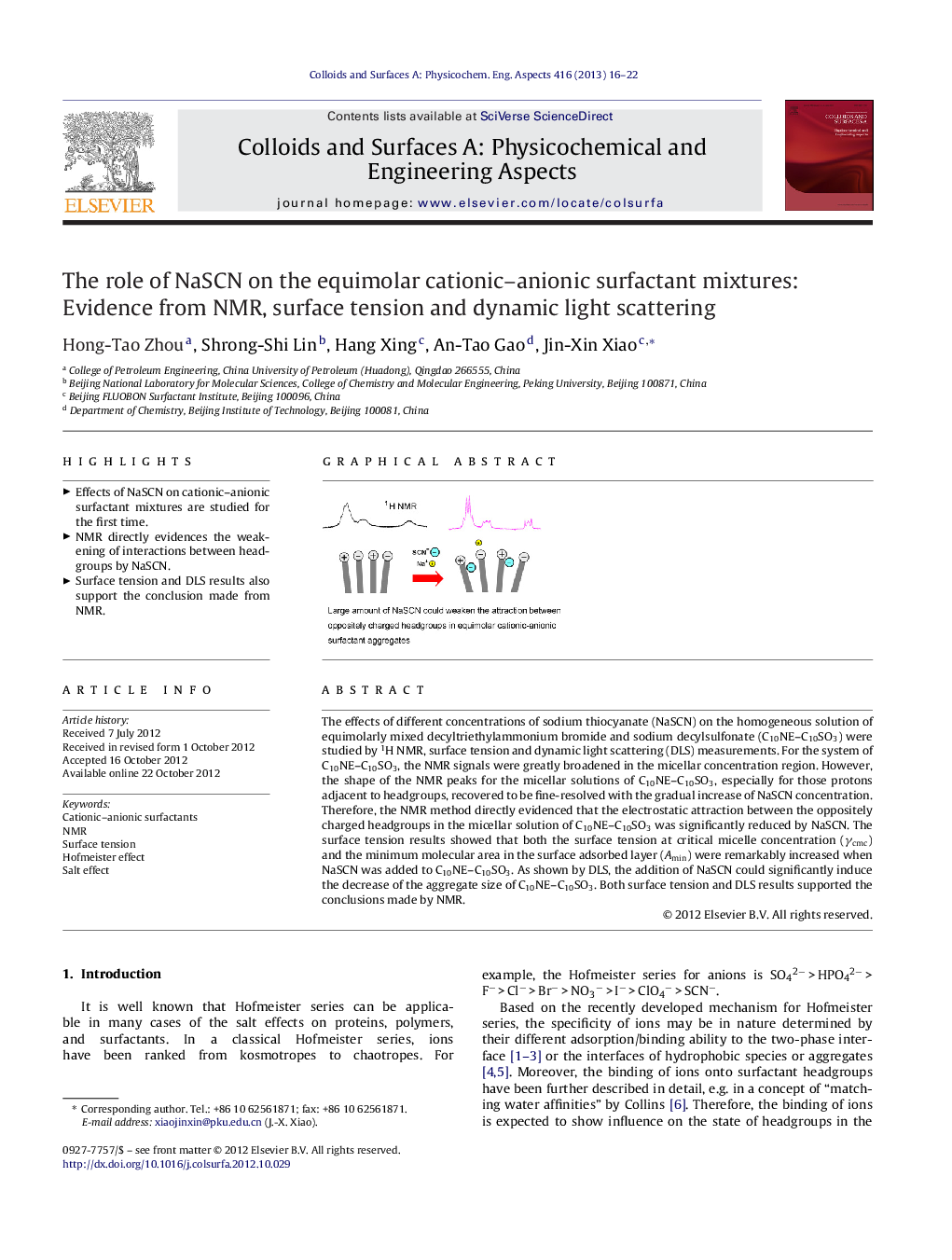| Article ID | Journal | Published Year | Pages | File Type |
|---|---|---|---|---|
| 593832 | Colloids and Surfaces A: Physicochemical and Engineering Aspects | 2013 | 7 Pages |
The effects of different concentrations of sodium thiocyanate (NaSCN) on the homogeneous solution of equimolarly mixed decyltriethylammonium bromide and sodium decylsulfonate (C10NE–C10SO3) were studied by 1H NMR, surface tension and dynamic light scattering (DLS) measurements. For the system of C10NE–C10SO3, the NMR signals were greatly broadened in the micellar concentration region. However, the shape of the NMR peaks for the micellar solutions of C10NE–C10SO3, especially for those protons adjacent to headgroups, recovered to be fine-resolved with the gradual increase of NaSCN concentration. Therefore, the NMR method directly evidenced that the electrostatic attraction between the oppositely charged headgroups in the micellar solution of C10NE–C10SO3 was significantly reduced by NaSCN. The surface tension results showed that both the surface tension at critical micelle concentration (γcmc) and the minimum molecular area in the surface adsorbed layer (Amin) were remarkably increased when NaSCN was added to C10NE–C10SO3. As shown by DLS, the addition of NaSCN could significantly induce the decrease of the aggregate size of C10NE–C10SO3. Both surface tension and DLS results supported the conclusions made by NMR.
Graphical abstractFigure optionsDownload full-size imageDownload as PowerPoint slideHighlights► Effects of NaSCN on cationic–anionic surfactant mixtures are studied for the first time. ► NMR directly evidences the weakening of interactions between headgroups by NaSCN. ► Surface tension and DLS results also support the conclusion made from NMR.
